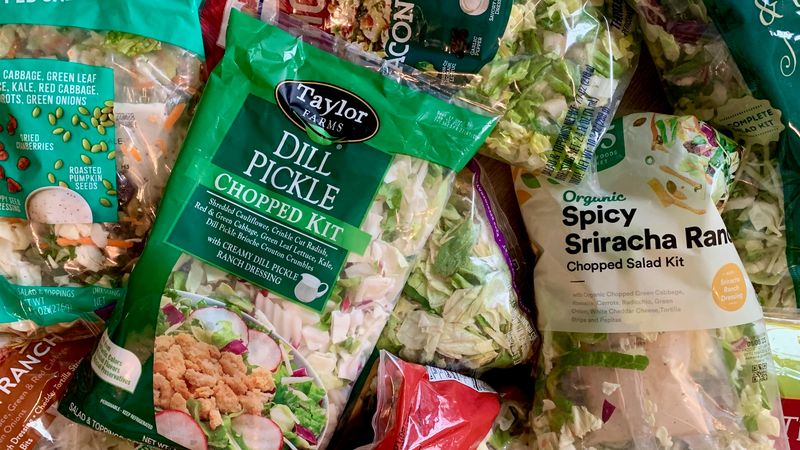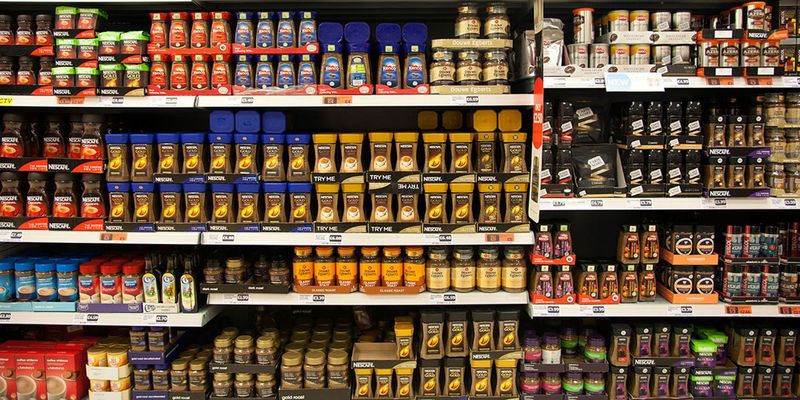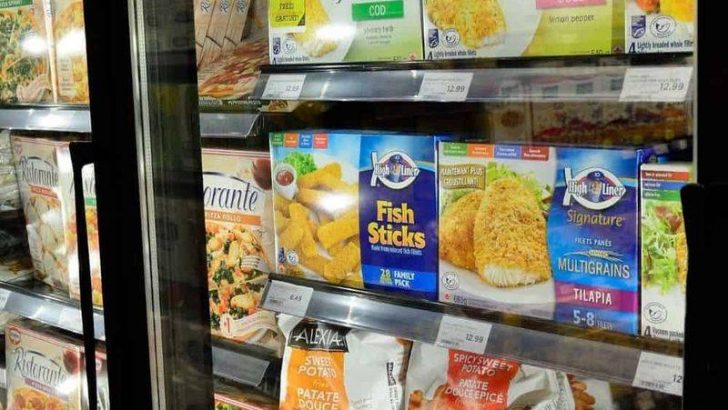Shopping at the supermarket can be a daunting task, filled with countless options and tempting displays. To make the most of your shopping trip and keep your budget in check, it’s crucial to know what to avoid. Here are 12 items you should steer clear of to ensure smarter, more efficient grocery shopping.
1. Pre-Packaged Salads

Why stick with pre-packaged when freshness is an option? Many pre-packaged salads often contain preservatives to extend shelf life. While convenient, they may not offer the same crispness as freshly picked greens.
It’s not uncommon for these salads to carry a higher price tag. You can get more value for your money by opting for whole greens and prepping them at home. Plus, you’ll have the freedom to customize your salad to your taste!
Next time you’re in the produce section, consider picking whole heads of lettuce. It’s a fresher and more budget-friendly choice.
2. Sugary Cereals

Are those cartoon characters on cereal boxes drawing you in? Many cereals marketed towards children are loaded with sugars and artificial flavors. Though they may be appealing, these cereals aren’t the best way to start your day.
They can lead to a spike in blood sugar followed by a crash, leaving you feeling tired and hungry soon after. Opting for whole grain or low-sugar cereals provides more lasting energy and nutrition.
By choosing healthier options, you can set a positive tone for the day without sacrificing taste or satisfaction.
3. Bottled Water

Think twice before reaching for that plastic bottle. Bottled water, while widely available, often comes at a premium price compared to tap water.
Many studies have shown that tap water is just as clean and safe as bottled options, depending on your location. Avoid the environmental impact of plastic waste by using a reusable bottle.
In many cases, you’re paying for the convenience and packaging rather than the product itself. Save money and reduce waste by sticking to tap water and investing in a quality filter if needed.
4. Ready-to-Eat Meals

Convenience comes at a cost. Ready-to-eat meals are tempting for their ease and variety, but they often come with preservatives and high sodium content.
For those watching their health, these meals may not be the best option. Cooking at home with fresh ingredients allows better control over what goes into your body.
While having a few on hand for emergencies isn’t a bad idea, relying on them regularly can affect your health and wallet. Homemade meals offer both quality and savings.
5. Imported Produce

Ever notice those exotic fruits with international stickers? Imported produce might seem exciting, but it often comes at a higher price due to transportation costs.
The journey affects freshness, reducing the nutrient content compared to local produce. By choosing in-season, local options, you support local farmers and enjoy fresher, tastier produce.
Eating locally not only benefits your health but also the community. It’s a delicious way to embrace sustainability and cut down on unnecessary expenditure.
6. Name-Brand Snacks

The allure of name-brand snacks is hard to resist, with their flashy packaging and familiar logos. However, you often pay more for the brand rather than the product itself.
Store brands or generic snacks can offer similar taste and quality at a fraction of the cost. With fewer marketing expenses, they pass the savings on to you.
Next time you’re craving a snack, give the store brand a try. You might be pleasantly surprised by the quality and flavor while keeping your budget intact.
7. Flavored Yogurts

Flavored yogurts may seem like a healthy choice, but they often contain added sugars and artificial flavors. These additions can negate the probiotic benefits that yogurt typically offers.
Opting for plain yogurt allows you to add your own fresh fruits or natural sweeteners, enhancing both taste and nutrition.
By choosing plain yogurt, you take control of what goes into your snack or meal. It’s a simple switch that boosts both health and enjoyment without extra sugar.
8. Canned Soups

Canned soups are a pantry staple for many, but their high sodium content is worth reconsidering. While convenient, the levels of salt used for preservation can be concerning for heart health.
Homemade soups can be just as hearty and flavorful, allowing you to control the ingredients and seasoning.
Preparing soup from scratch might take more time, but the taste and health benefits are well worth the effort. A homemade soup offers warmth and nourishment without the added sodium.
9. Bakery Cookies

The sweet scent of bakery cookies is undeniably enticing. However, these treats often come with a hefty price and hidden sugars.
Baking at home can be a more cost-effective and healthier option, allowing you to choose quality ingredients and control sugar levels.
While it’s nice to indulge occasionally, making your own cookies adds a personal touch and satisfaction that’s hard to beat. It’s a delightful way to enjoy a sweet treat without compromising your health goals.
10. Shredded Cheese

Grabbing a bag of shredded cheese might save time, but it often comes with added preservatives to maintain freshness. These additives can slightly alter the taste and texture.
Buying block cheese and shredding it yourself can enhance flavor and meltability, offering a richer culinary experience.
Though it requires a bit more effort, the rewards in taste and quality are undeniable. It’s a small change that makes a big difference in your dishes.
11. Instant Coffee

Instant coffee promises speed and ease, but at the expense of flavor and quality. The convenience often masks inferior coffee beans that lack the rich aroma of freshly brewed coffee.
Investing in whole beans and brewing your coffee brings out richer flavors and aromas, creating an experience to savor.
By taking a little extra time to brew your coffee, you enhance your morning ritual. It’s a simple upgrade that transforms your daily cup into a moment of pleasure.
12. Frozen Dinners

Frozen dinners offer quick solutions for busy nights, but they’re often laden with sodium and preservatives.
They’re a step down in taste and nutritional value compared to freshly cooked meals. Preparing meals ahead and freezing them can provide the same convenience without compromising health.
The effort spent in cooking fresh meals pays off with delicious, nourishing results. Enjoy meals that satisfy both taste and wellness by choosing home-prepared options.
Hi all, I am Sidney, an accountant, a hobbyist photographer, and a mother to two sweet girls who are my motivation. I love sharing the tips and tricks I gained all these years I’ve been a mother. I hope it will help you!

